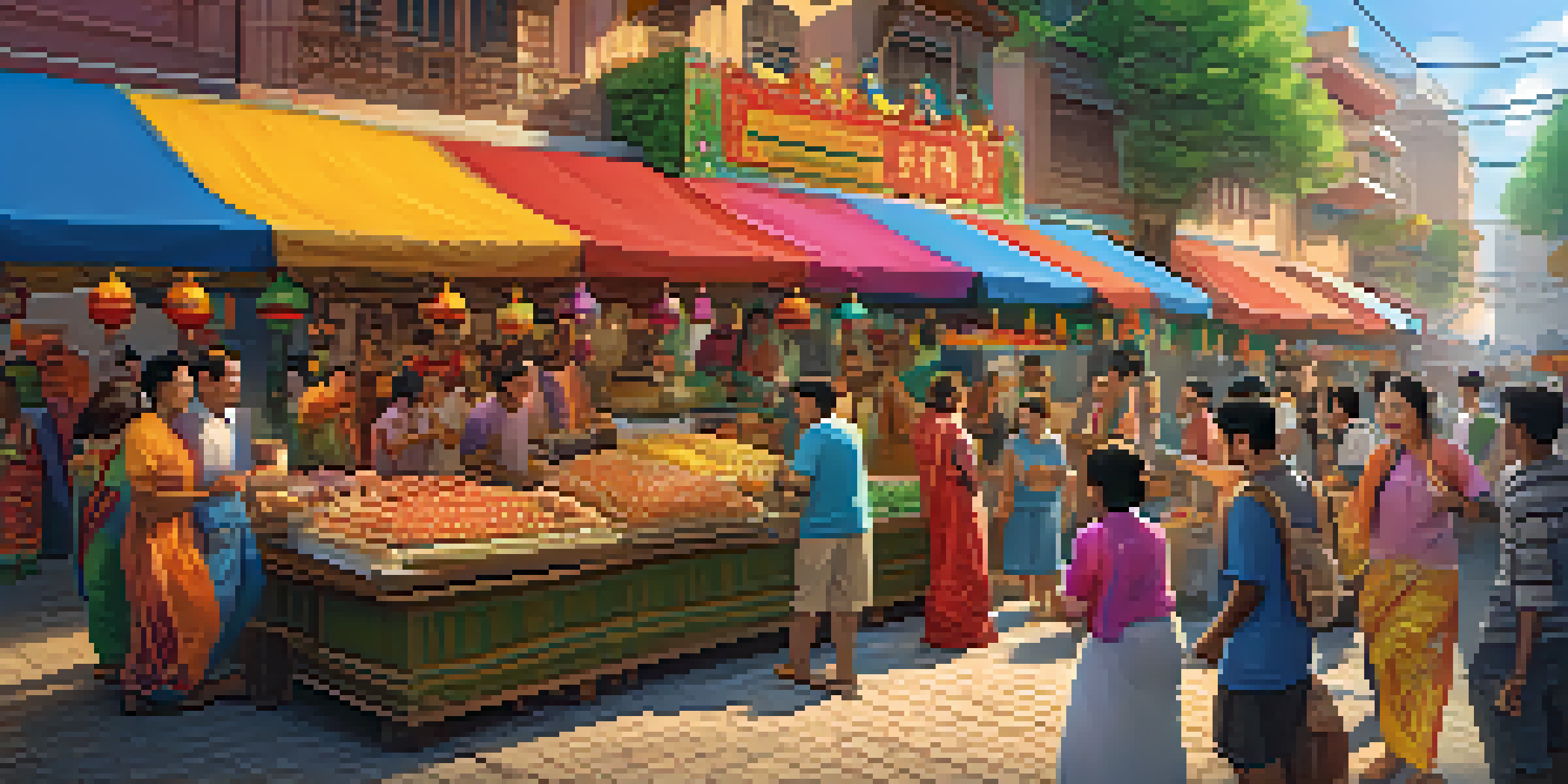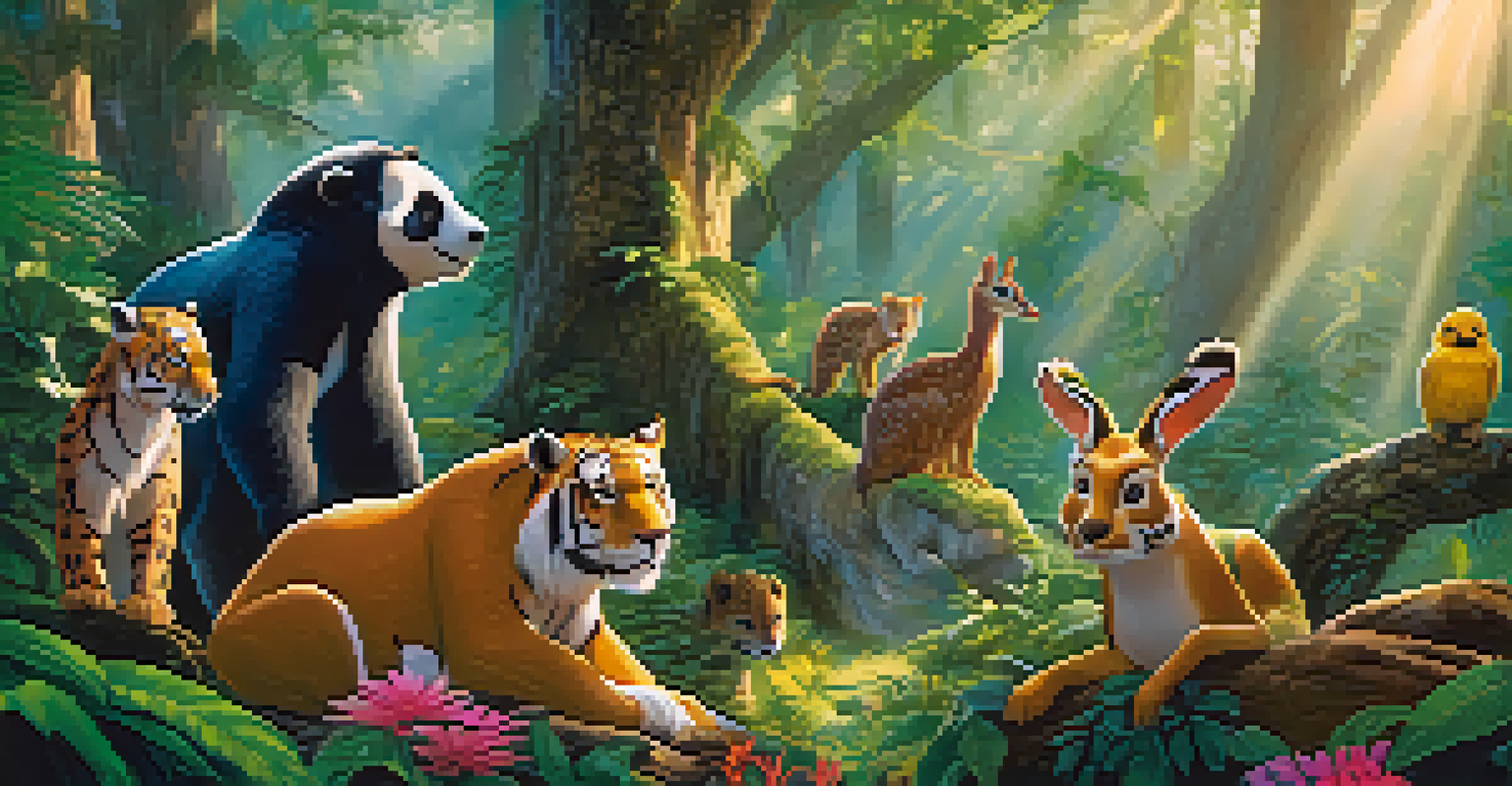The Role of Animation in Reflecting Cultural Shifts in Society

Understanding Animation as a Cultural Mirror
Animation has always been more than just entertainment; it serves as a lens through which we can view society's evolving values and beliefs. Think of it as a cultural mirror, reflecting what resonates with audiences at any given time. For instance, the rise of animated films featuring diverse characters highlights a growing acceptance of multiculturalism and inclusivity in today's society.
Animation is not just for kids; it is a powerful medium for social change and cultural reflection.
From early works like Disney's 'Snow White' to contemporary hits like 'Encanto,' animation has adapted to reflect societal changes. These shifts showcase how animation not only entertains but also educates audiences about different cultures and perspectives. This process allows viewers to engage with concepts they may not encounter in their daily lives.
Moreover, animation often tackles complex social issues, making them more accessible to all ages. By presenting difficult themes in a visually engaging format, animators can spark conversations and encourage empathy among viewers, demonstrating the profound impact that animated storytelling can have on cultural understanding.
Animation’s Role in Shaping Social Norms
Social norms evolve over time, and animation plays a significant role in shaping and reflecting these changes. For example, animated series like 'The Simpsons' or 'Bob's Burgers' have offered satirical commentary on family dynamics, gender roles, and societal expectations. By doing so, they not only entertain but also challenge traditional notions, encouraging audiences to rethink their own beliefs.

Moreover, as animation becomes more inclusive, it helps normalize diverse representations in media. Shows like 'Steven Universe' and 'The Owl House' have garnered attention for their LGBTQ+ characters and storylines, pushing boundaries and promoting acceptance. These examples illustrate how animation can lead societal discussions about identity and representation.
Animation Reflects Cultural Values
Animation serves as a cultural mirror, showcasing evolving societal values and beliefs through diverse characters and narratives.
In this way, animation acts as a catalyst for social change, opening the door for conversations that might be uncomfortable or difficult in other formats. By addressing these topics with humor and relatability, animated shows can influence public opinion and inspire a more inclusive society.
Historical Context: Animation Through the Ages
To appreciate the role of animation in cultural shifts, it's important to look at its historical context. Animation has evolved dramatically since its inception in the early 20th century, from simple black-and-white shorts to today's stunning 3D films. Each era reflects the prevailing social attitudes and technological advancements of its time.
The stories we tell are a reflection of our values, and animation allows us to explore those values in a unique and engaging way.
For instance, during the Great Depression, animations like 'Popeye' and 'Betty Boop' provided escapism and humor for struggling audiences. In contrast, the post-war era saw a rise in family-oriented cartoons, reflecting the societal push for traditional family values during that time. These shifts demonstrate how animation adapts to the collective psyche of society.
As we moved into the late 20th and early 21st centuries, themes of individuality and self-expression became prominent in animation. Shows like 'Avatar: The Last Airbender' and 'Adventure Time' embraced complex characters and narratives, reflecting a society increasingly focused on personal identity and acceptance. This evolution highlights animation's ability to evolve alongside cultural shifts.
The Influence of Globalization on Animation
Globalization has transformed animation, allowing creators from diverse backgrounds to share their stories. As audiences become more interconnected, animated films and series from different cultures have gained popularity worldwide. For example, Studio Ghibli's films have captivated audiences with their unique storytelling and rich cultural references, illustrating how animation can transcend borders.
This cross-cultural exchange enriches the animation landscape, offering viewers a broader understanding of global issues and traditions. As we see more collaborations between Western and Eastern animation studios, the blending of styles and narratives creates a more inclusive medium that resonates with a wider audience. This fusion fosters cultural appreciation and understanding.
Shaping Social Norms Through Humor
Animated series and films use satire to challenge traditional norms, fostering discussions about identity, representation, and social issues.
Furthermore, platforms like Netflix and Disney+ have made international animations more accessible than ever. This accessibility encourages viewers to explore various cultural narratives, promoting empathy and awareness of global issues. As a result, animation continues to play a vital role in reflecting and shaping cultural shifts on a global scale.
Animation as a Tool for Social Commentary
Many animators use their craft as a means of social commentary, addressing pressing issues through satire and humor. Shows like 'South Park' and 'Futurama' cleverly tackle topics such as politics, environmental issues, and consumerism, prompting viewers to reflect on their own beliefs and behaviors. By presenting these issues in a comedic format, animation makes serious topics more approachable.
Animated films, too, have taken on significant social themes. 'Zootopia,' for instance, uses a story about anthropomorphic animals to explore issues of prejudice and discrimination. By framing these issues within a fantastical world, the film encourages audiences to confront their own biases and consider the impact of societal stereotypes.
This ability to blend entertainment with meaningful messages allows animation to resonate with viewers on multiple levels. It not only entertains but also inspires critical thinking and dialogue about the world around us, proving that animation can be a powerful medium for social change.
The Future of Animation and Cultural Reflection
As technology continues to advance, the future of animation looks promising, with new opportunities for cultural reflection. Innovations such as virtual reality (VR) and augmented reality (AR) are set to transform how stories are told, allowing for more immersive experiences. This technological shift could further enhance the ability of animation to explore complex cultural themes and engage audiences in unprecedented ways.
Moreover, with the growing demand for diverse storytelling, we can expect to see more voices and perspectives represented in animation. As creators from various backgrounds gain opportunities in the industry, the narratives produced will likely reflect a richer tapestry of human experience. This diversity will only enhance animation's role as a cultural mirror.
Globalization Enhances Animation Diversity
Globalization allows for cross-cultural storytelling in animation, enriching the medium and promoting a broader understanding of global issues.
Ultimately, the future of animation is not just about entertainment; it will increasingly serve as a vital platform for cultural exploration and social change. By continuing to challenge norms and reflect the world around us, animation will remain an essential part of our societal dialogue, shaping the way we understand and connect with one another.
Conclusion: Animation's Enduring Legacy in Society
In conclusion, animation holds a unique place in our society as both a reflection and a driver of cultural shifts. By examining its evolution, we see how animation has adapted to the changing landscape of social norms and values. From providing commentary on pressing issues to fostering empathy through diverse representation, animation plays a crucial role in shaping public discourse.
As we look ahead, the potential for animation to influence cultural understanding and acceptance seems limitless. With technological advancements and a push for inclusive storytelling, the animation industry is set to evolve further, offering new opportunities for cultural reflection and engagement. This ongoing journey will ensure that animation remains a vital part of our societal fabric.

Ultimately, animation is more than just entertainment; it is a powerful medium that captures the essence of our cultural narrative. As we embrace the stories told through animation, we participate in a larger conversation about who we are and who we aspire to be as a society.